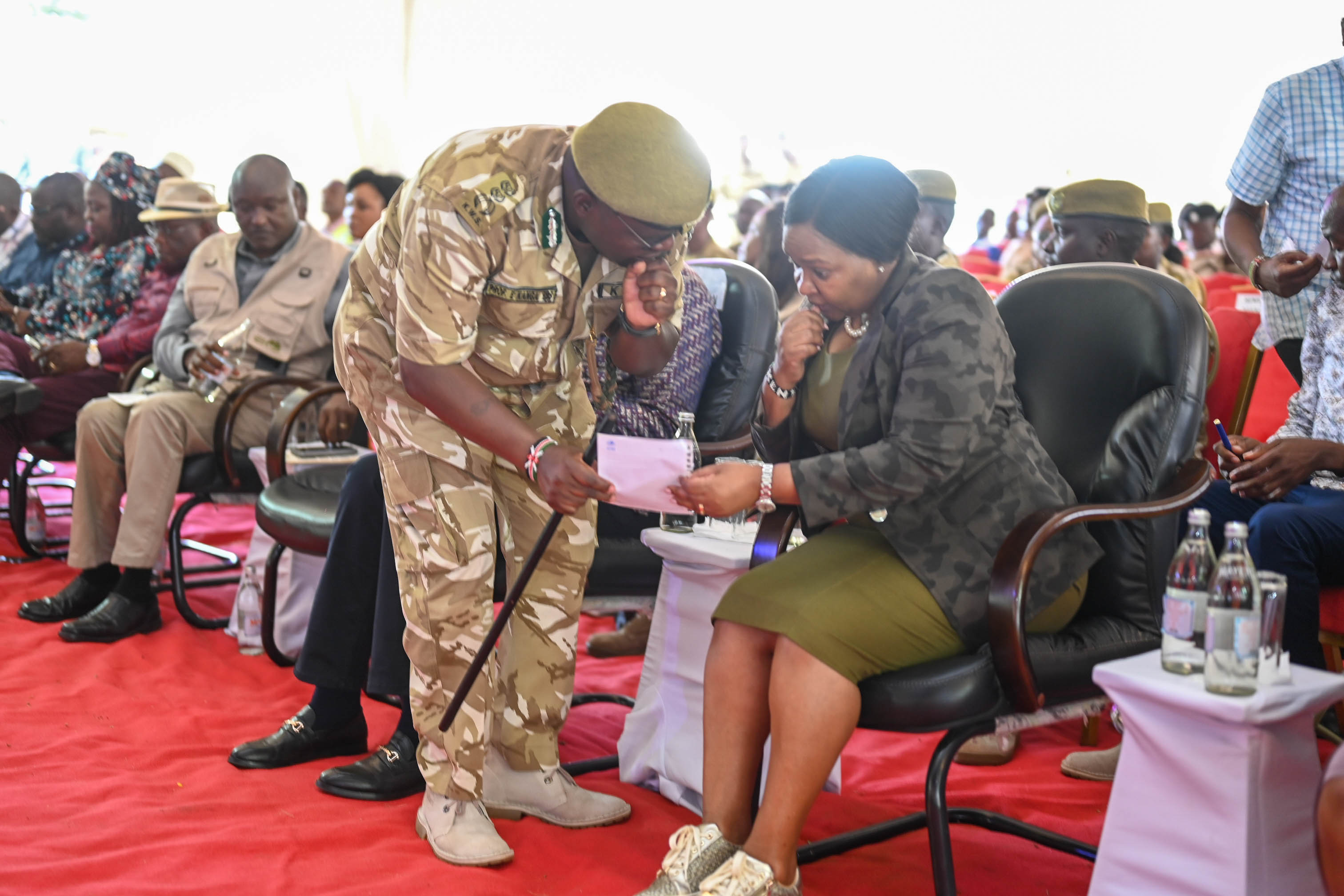
KWS DG Prof. Erustus Kanga consults with Tourism and Wildlife CS Rebecca Miano during the issuance of compensation for human wildlife conflict victims.
The government has disbursed Sh 2.8 billion across the country as compensation for victims of human-wildlife conflict, Tourism and Wildlife CS Rebecca Miano has said.
Miano said an additional Sh 1.36 billion is currently under processing.
“These payments are not favours. They are not government gifts. They are your constitutional right,” Miano said.
The crops, livestock and property damaged are compensated at a fair market value.
The CS said communities need prevention, protection, and partnership.
This was payment from 2014 to October 2020, clearing part payments for human deaths.
Miano said the government will clear all the pending compensation claims.
“Each number represents a family pushed to the edge. This suffering is not acceptable. And today, we respond decisively,” she said.
Miano said the government has set in motion a multi-faceted approach to human-wildlife coexistence through six pillars of intervention.
The CS said critical wildlife corridors are being secured, adding that the Tsavo East-Galana Ranch-Dakacha-Adu-Sabaki River-Arabuko Sokoke corridor is under active restoration.
Miano said the Tsavo-Kilifi boundary fence is now a top priority and will be completed within twelve months.
The CS said technology is also being deployed.
She said 70 new rangers have been deployed across Kilifi.
Miano said since March, KWS has conducted chopper-assisted elephant drives to reduce pressure on farms and villages.
She said the community welfare and resilience programmes are being expanded in partnership with the Kilifi County Government.
Miano said the government is investing in community-based conservation solutions, including exposure tours to successful conservancies, support for local conservancy proposals and training in wildlife-compatible enterprises.
Miano said through their Corporate Social Responsibility projects, they will continue to construct classrooms, distribute water tanks, and support other development priorities — because conservation must go hand in hand with community upliftment.
He assured the community that the Board is actively engaged in reviewing and supporting stronger measures to protect both people and wildlife, adding that inclusive, people-led conservation remains central to KWS’s mission.
Prof. Kanga acknowledged the hardship caused by recurring wildlife incursions in Ganze, Magarini, and Vitengeni, pledging KWS’s unwavering commitment to protect communities while conserving Kenya’s natural heritage.
He confirmed the deployment of a fully equipped Problem Animal Management Unit (PAMU) in Kilifi to improve rapid response and reduce fear among residents.
These interventions, anchored in the KWS Strategic Plan 2024–2028 and the Bottom-Up Economic Transformation Agenda, reflect a shared vision: a future where communities and wildlife not only coexist but flourish together in safety, harmony, and mutual benefit.
















